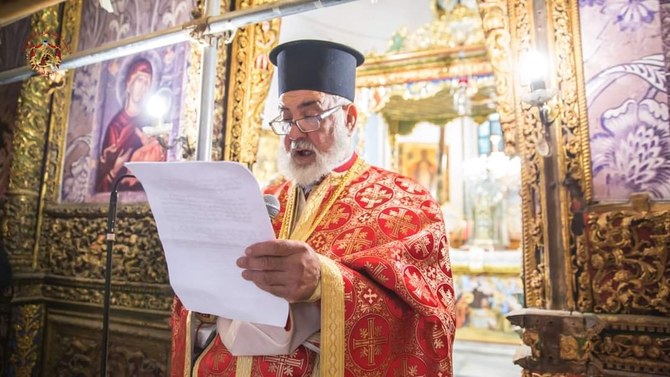While people in many parts of the world celebrate the birth of Jesus Christ on Dec. 25, for most Orthodox and Arab Christians the key date is actually Jan. 7.
That is because most Orthodox Christian groups follow the Julian calendar created by the Romans, rather than the Gregorian calendar that was embraced by most Christian countries in 1582. The dates of several Christian holidays, including Christmas and Easter, differ from one to the other.
For Arabs, the Julian calendar and remaining true to tradition are very important, Fr. Spiridon Sammour, the pastor of the Church of the Nativity in Bethlehem, where Jesus is believed to have been born, told Arab News.
“Many Orthodox Christians celebrate Christmas Day on or near Jan. 7 to remember Jesus Christ’s birth, as described in the Bible,” he said in an exclusive interview.
“Christmas celebrates the birth of Jesus Christ, who many Christians believe is the son of God. The birthdate is unknown because there is little information about his early life. The Gospel of St. Matthew in the Bible claims Jesus was born during Herod the Great’s reign. Herod, who was a king of Judea, died in 4 B.C. Many Christians celebrate Jesus’ birthday on Dec. 25 but there are some who hold tradition by observing the date on Jan. 7.”
Muslims also recognize Jesus as a great prophet and that shared respect brings Christians and Muslims together. Easter commemorates the time when Christians believe Jesus was crucified by the Romans in Jerusalem and then resurrected.
“Christmas on Jan. 7 is also known as Old Christmas Day. Eleven days were dropped (from the Gregorian calendar) to make up for the calendar discrepancy that accumulated with the Julian calendar when England and Scotland switched in 1752,” Fr. Sammour explained.
“Many people, especially in rural areas, did not accept the loss of these 11 days and preferred to use the Julian calendar. Many Orthodox churches recognize the holiday dates according to the Julian calendar,” he said.
Making it even more complicated is the fact that the Julian calendar was revised in 1923, resulting in different Christian groups adopting different dates for their celebrations. The revised Julian calendar is more in line with the Gregorian calendar so a few Orthodox churches celebrate Christmas on Dec. 25, such as the Antiochian Orthodox Church in the US. The Greek Orthodox Church, meanwhile, celebrates on Jan. 7 and the Armenian Orthodox Church on Jan. 19.
Regardless of the calendars they use, the Church of the Nativity in Manger Square remains the single most important place of worship for Christians when it comes to the birth of Jesus and is the center of their faith.
“The Church of the Nativity includes the Grotto of the Nativity and nearby caves, the Greek Orthodox Monastery, the Armenian Monastery, St. Jerome’s School, St. Catherine’s Church and St. Jerome’s Church,” Fr. Sammour said.
“When we visit the Grotto of Nativity, we find in the place where Jesus was born a star with 14 points. This denotes the 14 generations from Adam to Abraham, from Abraham to David the prophet and king, from David to the captivity to Babylon, and from the captivity to Babylon to Joseph, the husband of Mary and of whom Jesus was born.
“But most important is the inscription on the star. It reads in Latin, ‘Hic natus est Jesus Christus ex Maria Vergine,’ which translates as, ‘Here Jesus Christ was born of the Virgin Mary.’” Fr. Sammour said.
“The key is the word ‘here’ as it means that the great mystery of the incarnation took place in this particular place, and this means that this geographical point is central because it is a meeting point between heaven and earth, God and man.”
The church is considered one of the oldest and most sacred historical buildings in the world. Roman Empress Helena ordered her son, Emperor Constantine, to build the church in A.D. 326 over the cave in which Jesus was born, after recognizing Christianity as the official religion of the Roman Empire.
“Over the centuries, the church suffered many attempts to destroy it, including in A.D. 529 when the Samaritans set fire to it. In A.D. 540 it was rebuilt by Emperor Justinian and expanded to the way it is today,” Fr. Sammour said.

